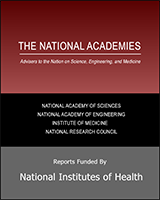From: 5, Managing BSAT Research and the Select Agent Program

NCBI Bookshelf. A service of the National Library of Medicine, National Institutes of Health.
Centers for Disease Control and Prevention (reproduced from <http://www.bt.cdc.gov/agent/agentlist-category.asp>)
Category A: High-priority agents include organisms that pose a threat to national security because they:
Category A agents/disease include anthrax (Bacillus anthracis), botulism (Clostridium botulinim toxin), plague (Yersinia pestis), smallpox (variola major), tularemia (Francisella tularensis), and viral hemorrhagic fevers (filoviruses [e.g., Ebola, Marburg] and arenaviruses [e.g., Lassa, Machupo]).
Category B: Second highest priority agents include those that:
Category B agents/diseases include brucellosis (Brucella species), epsilon toxin of Clostridium perfringens, food safety threats (e.g., Salmonella species, Escherichia coli O157:H7, Shigella), glanders (Burkholderia mallei), melioidosis (Burkholderia pseudomallei), Psittacosis (Chlamydia psittaci), Q fever (Coxiella burnetii), ricin toxin from Ricinus communis (castor beans), staphylococcal enterotoxin B, typhis fever (Rickettsia prowazekii), viral encephalitis (alphaviruses [e.g., Venezuelan equine encephalitis, eastern equine encephalitis, western equine encephalitis]), water safety threats (e.g., Vibrio cholerae, Cryptosporidium parvum).
Category C: Third highest priority agents include emerging pathogens that could be engineered for mass dissemination in the future because of:
Category C agents include emerging infectious diseases such as Nipah virus and hantavirus.
National Institutes of Health
NIH Guidelines (available at <http://oba.od.nih.gov/oba/rac/guidelines_02/APPENDIX_B.htm>)
From: 5, Managing BSAT Research and the Select Agent Program

NCBI Bookshelf. A service of the National Library of Medicine, National Institutes of Health.